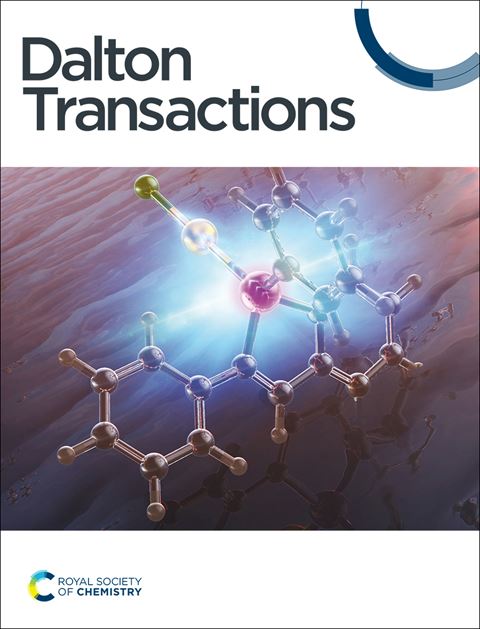氮取代2,4,9-三氮adamantan基三羟胺的过渡金属配合物:氮α-对高氧化态稳定作用的证据
IF 3.5
3区 化学
Q2 CHEMISTRY, INORGANIC & NUCLEAR
引用次数: 0
摘要
以硝基甲烷和亚硝基烯烃为前体,采用一锅四组分缩合法合成了新型螯合三羟胺配体- 7-硝基-2,4,9-三氮杂adamaman -2,4,9-三醇(NO2-TRIADs)。脱质子后,NO2-TRIADs与锰、铁和镍形成稳定的类金刚石配合物,呈非典型+4氧化态。通过XRD、NMR、Mössbauer光谱、UV-Vis、FT-IR、HRMS和元素分析对这些配合物进行了表征。基于DFT计算的理论分析表明,N-O-M片段中的氮原子具有显着的给电子“α-效应”,这是这些配合物中金属高氧化态稳定的原因。NO2-TRIADs的金属(IV)配合物在氧化反应中表现出很高的催化活性,特别是硫醇有氧转化为二硫化物(收率高达98%)和二苯基甲醇和二氢蒽与mCPBA氧化活化的C-H键(收率高达74%)。在二氢蒽的氧化过程中,对蒽醌的生成具有显著的选择性(蒽醌/蒽酮= 7)。本文章由计算机程序翻译,如有差异,请以英文原文为准。
Transition metal(IV) complexes of nitro-substituted 2,4,9-triazaadamantane-based tris-hydroxylamines: evidence for nitrogen α-effect on stabilization of higher oxidation states
7-Nitro-2,4,9-triazaadamantane-2,4,9-triols (NO2-TRIADs), new chelating tris-hydroxylamine ligands, were synthesized by a novel one-pot, four-component condensation involving nitromethane and nitrosoalkene precursors. Upon deprotonation, NO2-TRIADs form stable diamantane-like complexes with manganese, iron and nickel in atypical +4 oxidation state. These complexes were characterized by XRD analysis, NMR, Mössbauer spectroscopy, UV-Vis, FT-IR, HRMS, and elemental analysis. Theoretical analysis based on DFT calculations revealed a remarkable electron donating “α-effect” of the nitrogen atom in the N–O–M fragment that is responsible for the stabilization of the higher oxidation state of the metal in these complexes. Metal(IV) complexes of NO2-TRIADs exhibit high catalytic activity in oxidation reactions, in particular, in the aerobic conversion of thiols into disulfides (up to 98% yield) and oxidation of activated C–H bonds in diphenylmethanol and dihydroanthracene with mCPBA (up to 74% yield). In the oxidation of dihydroanthracene, a notable selectivity toward the formation of anthraquinone was achieved (anthraquinone/anthrone = 7).
求助全文
通过发布文献求助,成功后即可免费获取论文全文。
去求助
来源期刊

Dalton Transactions
化学-无机化学与核化学
CiteScore
6.60
自引率
7.50%
发文量
1832
审稿时长
1.5 months
期刊介绍:
Dalton Transactions is a journal for all areas of inorganic chemistry, which encompasses the organometallic, bioinorganic and materials chemistry of the elements, with applications including synthesis, catalysis, energy conversion/storage, electrical devices and medicine. Dalton Transactions welcomes high-quality, original submissions in all of these areas and more, where the advancement of knowledge in inorganic chemistry is significant.
 求助内容:
求助内容: 应助结果提醒方式:
应助结果提醒方式:


